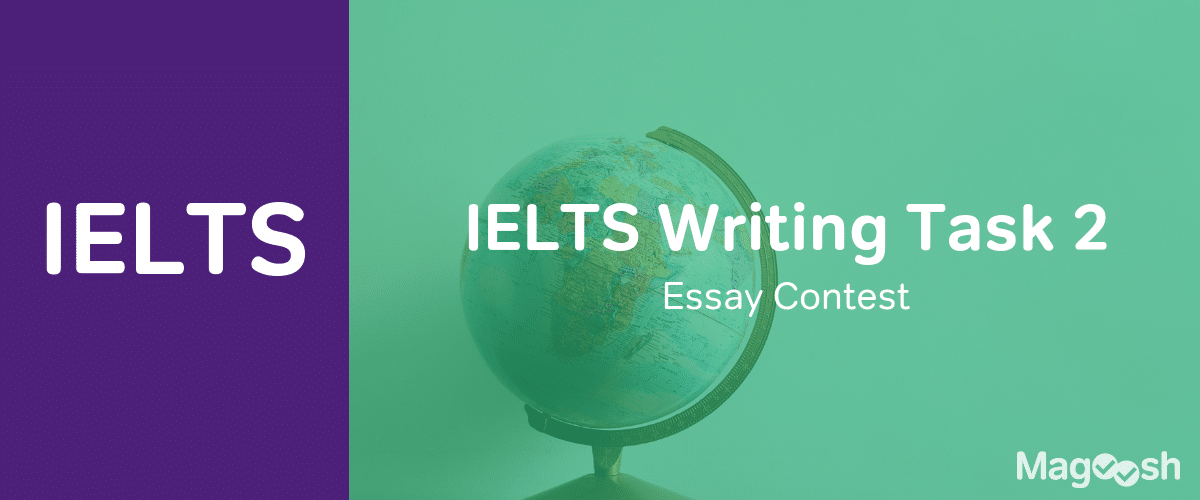 The IELTS Writing Task 2 requires you to write at least 250 words expressing your perspective on a topic. But the question types for Task 2 vary on both Academic and General Training. How many types of Writing Task 2 in IELTS are there? There are five main IELTS Writing Task 2 question types: agree/disagree, advantages/disadvantages, two-part, cause/solution, and discuss both sides. Click on the links below to access a sample question for each type, with model answer.
The IELTS Writing Task 2 requires you to write at least 250 words expressing your perspective on a topic. But the question types for Task 2 vary on both Academic and General Training. How many types of Writing Task 2 in IELTS are there? There are five main IELTS Writing Task 2 question types: agree/disagree, advantages/disadvantages, two-part, cause/solution, and discuss both sides. Click on the links below to access a sample question for each type, with model answer.
The IELTS Writing Task 2 Question Types
- Agree or Disagree
- Advantages and Disadvantages
- Two-Part
- Causes and Solutions to a Problem
- Discuss both sides (and give your opinion)
IELTS Writing Task 2 Question Types: Agree or Disagree
True to its name, this question type requires you to explain how much you agree or disagree with a statement.
How to Identify this Question Type
An “Agree or Disagree” question will state an opinion. More often than not, the opinion will be preceded by a factual statement for context. From there, the question will generally say: “To what extent do you agree or disagree with…”, or something very similar to that.
Sample “Agree or Disagree” Question
It is now possible to order almost any item over the Internet and have it delivered to one’s home. As a result, people are no longer patient or careful in their shopping habits. To what extent do you agree or disagree with this statement?
Be sure to check out our model essay in response to this sample question.
Frequency of Agree or Disagree Questions
Of the different types of essays in IELTS, these are fairly common. They appear in the IELTS Writing section about 28% of the time.
Agree or Disagree Essay Organization
Here is the recommended structure for this essay type:
- Introduction: State how much you agree or disagree
- Body paragraphs: Explain why you agree or disagree
- Conclusion: Review and reinforce your extent of agreement/disagreement
Agree or Disagree Essay Tips
- Always choose the simplest, easiest position to defend. This may or may not be your true opinion, but that’s OK.
- When a fact is given for context, remember to focus your essay on the opinion, not the underlying fact.
- If you partly agree and partly disagree, you can devote one body paragraph to your agreement, and one to disagreement.
IELTS Writing Task 2 Question Types: Advantages and Disadvantages
In this question type, you’ll need to identify the advantages and disadvantages of a situation.
How to Identify Advantage/Disadvantage Questions
This question type will present facts about a common situation or common practice, and then ask you discuss the advantages or disadvantages of this thing. But you will nearly always see both the words “advantages” and “disadvantages” in the question. And you will always see at least one of those two words.
Sample Advantages and Disadvantages Question
With modern transportation, workers and students are increasingly mobile, and have more and more opportunities to study and work abroad. Discuss the advantages and disadvantages of this development.
This link leads to a band 9 model essay in response to this question.
Frequency of this Question Type
Like the agree/disagree question type, advantages disadvantages questions appear on the exam about 28% of the time. This means that among the different types of essay in IELTS Task 2, advantage/disadvantage is also quite common.
Advantages and Disadvantages Essay Organization
An essay of this type should have the following basic structure:
- An introductory paragraph that summarizes the advantages and disadvantages.
- A body that describes the advantages and disadvantages.
- A conclusion that reviews those main ideas.
Tips for the Advantages/Disadvantages Essay
- This is not an either/or essay where you can take one position. You need to discuss both advantages and disadvantages rather than taking one side.
- While you can say that there are more advantages than disadvantages, it’s generally easier to write the essay and easier to get a top score if you take a balanced approach.
- Since you are not taking a position per se, it’s a bad idea to dispute the stated facts at the beginning of the question.
IELTS Writing Task 2 Question Types: Two-Part
The two-part question type has, as you might expect, two parts, so that you need to answer two closely-related questions about a social issue instead of a single question.
Identifying Two-Part Questions on the Exam
The question will start with a short statement about a situation or common practice. From there, two-parters can be identified by the presence of two questions at the end of the prompt. This is similar to the structure of cause/solution, but two-part questions will not necessarily ask you to find the cause or the solution to a problem.
Sample Two-Part Question Type
Increasingly, people eat food from other parts of the world, rather than local food. What do you think is driving this trend? Is this a good or bad development?
Click here for an example response to the above two-part question.
How Often You’ll See Two-Part Question Types
The two-part question type is one of the three most common question types, alongside the advantage/disadvantage and agree/disagree types. Like the other two most common types, the frequency of the two-parter is 28%.
Two-Part Essay Organization
Here is the recommended structure for the two-part Task 2 essay:
- An introduction where you briefly answer both questions.
- A body that answers each of the two questions.
- A conclusion that reviews and reinforces the two answers.
Two-Part Essay Tips and Tricks
- To keep this essay from getting too long or complex, devote just one body paragraph to each of the two questions.
- Two-part questions will often have one question that resembles a different question type. For instance, you may see an agree/disagree question as one of the two, or a advantage/disadvantage question, a cause/solution question.
- It can be easy to accidentally focus much more on one of the questions than the other. Remember to maintain balance!
IELTS Writing Task 2 Question Types: Causes and Solutions to a Problem
As you’d expect from the name of this question type, you’ll be required to explain why a problem is happening, and how that problem may be solved.
How to Identify a Cause-Solution Question
This kind of question is very similar to the two-part question, but there are some distinctly unique features here. A cause-solution question will always start with a very brief description of a common problem, generally a single short sentence. Then, the first question will always either ask what the cause of the problem is, or ask what additional problems are being caused by the main problem. The second question will always ask how the problem or problems may be solved.
Sample Cause and Solution Question
Many large cities around the world lack affordable housing. What problems does a lack of affordable housing cause? How can these problems be overcome?
For a model essay that responds to this question, click here.
How often does this question type come up?
Cause/solution questions will appear in IELTS Writing Task 2 about 11% of the time.
Cause Solution Essay Structure
A particularly helpful way to structure this essay type is:
- Introduction that briefly describes both the cause (or causes) and the proposed solution(s).
- A body that explores cause and solution in greater depth.
- A conclusion that gives some final thoughts on the problem, its causes, and the way it could be solved.
Tips on How to Do Well in Your Cause/Solution Response
- Have one body paragraph describe the cause(s), and one describe the solution.
- Keep your proposed solution simple; otherwise the solution could dominate the essay at the expense of the cause.
- Remember that the stated situation is supposed to be bad. Avoid advantages/disadvantages or agreeing/disagreeing. There are not two sides here!
IELTS Writing Task 2 Question Types: Discuss both sides (and give your opinion)
Here, you’ll discuss both sides of an issue with some degree of balance, while also stating which side you are personally on.
How to Identify a “Discuss Both Sides” Task 2 Question
The opening of a “Both Sides” prompt in IELTS Writing will present two different, opposite opinions about the same social issue; usually these opinions will be presented in two separate sentences. You will then be told to “discuss both views and give your opinion,” often in those exact words.
Discuss both sides (and give your opinion): Sample Question
Some people seek a lot of advice from family and friends when choosing their career. Others feel it is better to choose a career more independently. Discuss both views and give your opinion.
Click here for a model response to this “both sides” sample question.
How often will you see “both sides” on the real exam?
This is the least common of the major question types. Expect to see it only around 5.5% of the time.
The Structure of a “Both Sides” Essay
To write a successful essay while managing your time limits, here’s a useful approach to structure:
- An introduction that briefly describes both sides of the issue and your position.
- A body that explores each side in-depth and presents/supports your opinion.
- A conclusion that reviews the two sides and reinforces your opinion.
The Both Sides Essay: Tips and Tricks
- When organizing your “both sides” essay, it can be useful to have one body paragraph for each of the initially stated positions, comparing each position to your own opinion.
- Because the structure is a bit complex (two sides and your own opinion) it helps to carefully outline your essay before you start.
- While your own opinion can have elements of both sides, you do not lose points for clearly taking one of the sides. And often, this is the easiest approach.





